W're sorry, we couldn't find any activities for your search. Try changing the filters.
The Ortles Cevedale massif, which is part of the southern Rhaetian Alps, is developed between Trentino, Südtirolo or Alto Adige, the province of Sondrio and the province of Brescia. The main ridge acts like a watershed between the Adige basin and the Adda basin. The natural borders are Alta Val Camonica, Passo del Tonale, Val di Sole and Val di Non in the South, Passo Palade and Val d’Adige to the East, Val Venosta, Valle di Trafoi, Passo dello Stelvio and Val Braulio to the North, Alta Valtellina with Bormio, Valfurva, Passo Gavia and Valle delle Messi to the West. It is one of the largest protected areas in Italy, thanks to the Stelvio National Park, bordering the Swiss Engadine National Park. From a geological point of view, it is composed of crystalline micascists, mainly quartz phyllites in the Cevedale group, rocks that also make up the base in the Ortles group, in which however they are dominated by layers of metamorphic dolomite. The main peaks are Ortles (3905 m), Gran Zebrù (3857 m), Cevedale (3769 m), Monte Zebrù (3735 m), Palon de La Mare (3705 m), San Matteo (3692 m), Vioz (3645 m). On the northern side of the chain, that goes from Palon de La Mare to Pizzo Tresero there is the second largest Italian glacial system, the Forni Glacier, which occupies an area of almost 13 square kilometers.
From the mountaineering point of view, the massif is known for ski mountaineering in winter and spring. Almost all the peaks of the massif can be reached on skis and many shelters of the Cevedale group are open during this period for weekly ski mountaineering tours. In Rabbi and Pejo Valleys in Val di Sole and in upper Val Martello in winter, you can also practice climbing in piolet traction on the numerous frozen waterfalls. The most famous are those of the Valorz valley in front of the village of San Bernardo di Rabbi.
In the Ortles Cevedale mountain chain there are about twenty peaks above 3500 m of altitude and many others above 3000. In summer season there are many options to choose from: classic mountaineering ascents to the main peaks, along with the standard routes or ridges or the ones on mixed terrain, rock and ice, or on the various north walls. Among these, some stand out: the Ortles by the standard route or along the countless ridges, the Gran Zebrù, the Cevedale, the Vioz – Cevedale crossing, the crossing of the Thirteen Peaks from Cevedale to Pizzo Tresero, riding thirteen peaks over the 3500 m. Or the more challenging and adventurous traverse, from the Stelvio Pass to the Ortles Pass, along the Baeckmann Grat, which connects the Trafoier Eiswand to the Cima Thurwieser.
In Val di Solda you can also climb two via ferratas; Punta Tabaretta (3128 m), one of the most difficult modern via ferratas in the region, or Croda di Cengles Tschengleser Hochwand (3375 m).
Throughout the Stelvio National Park there are countless naturalistic excursions lasting one or more days.
The south-eastern side of the Cevedale, between Val Martello, Val di La Mare, Valle Sternai and Val d’Ultimo, lends itself to weekly hiking tours connecting these valleys and the various huts through a series of passes and glaciers with limited technical difficulty.
The summit of Monte Vioz (3645 m) in Val di Peio is one of the few peaks of this altitude that can be reached in summer without the use of mountaineering equipment. From the top in ten minutes you can reach Punta Linke (3631 m), where it is possible to visit a small museum of the First World War in the Bunker (Stol, in Solandro dialect) of arrival of the cableway that supplied the first Austrian line in the area.
To the north of Passo del Tonale it is possible to follow two aided paths, the Path of the Austrians and the Path of the Alpine troops that connect the Austrian and Italian defense lines of Albiolo.
Throughout the massif there are several sites dating back to the Great War fought between 1915-1918 between Italian Alpine troops and Austrian Kaiserjäger, and Punta San Matteo (3692 m) has remained famous for being the site of the highest battle of the whole war.
The most popular huts are:
- The Vioz hut (3535 m) and the Larcher hut (2608 m) in Val di Pejo.
- The Dorigoni hut (2437 m) and the Lago Corvo hut (2425 m) in Val di Rabbi.
- The Canziani Höchster-Hütte hut (2561 m) in Val d’Ultimo.
- The Corsi Zufall-Hütte hut (2265 m) and the Martello Marteller-Hütte hut (2580 m) in Val Martello.
- The Serristori Zaytal-Hütte (2721 m), the Tabaretta (2556 m), the Payer (3029 m), the Coston Hintergrat-Hütte (2661 m), the Città di Milano Schaubach-Hütte (2581 m) and the Borletti Bergl-Hütte (2188 m) in Val di Solda.
- The V Alpini hut (2878 m) in Val Zebrù.
- The Branca hut (2487 m), the Pizzini (2700 m) and the Casati (3254 m) in Val dei Forni.
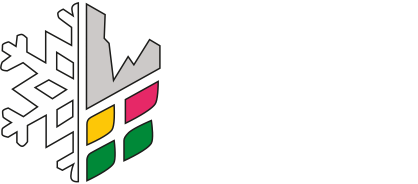
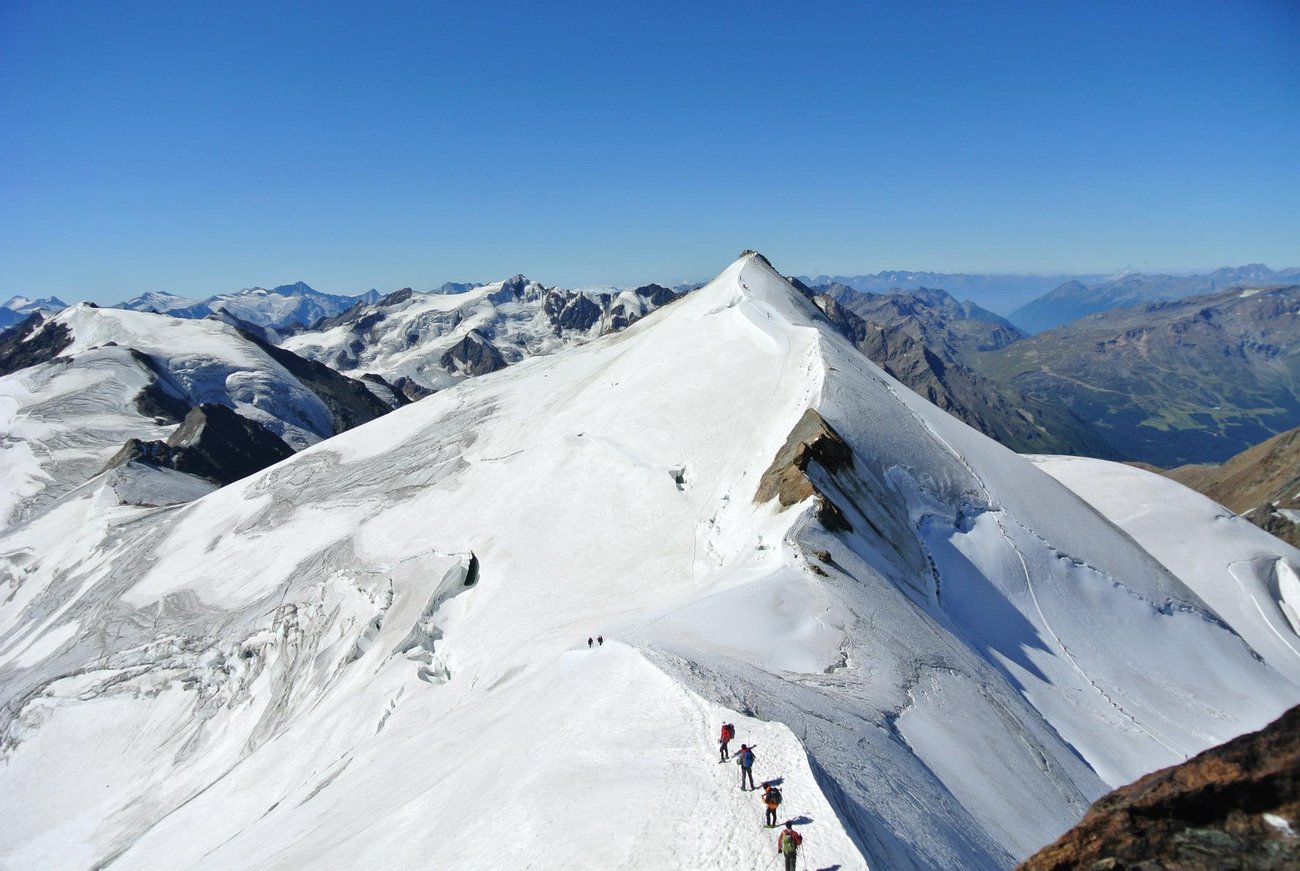
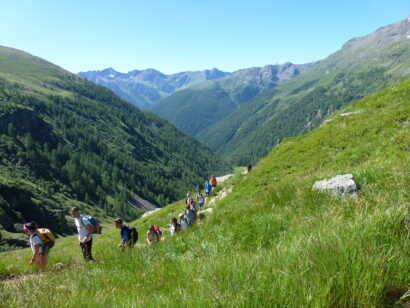
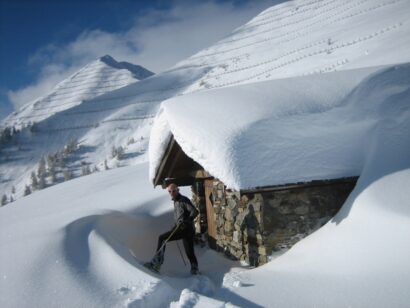
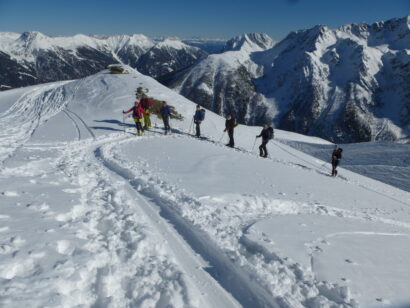
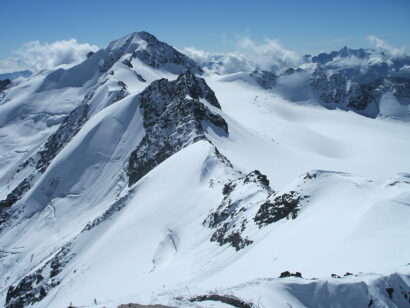
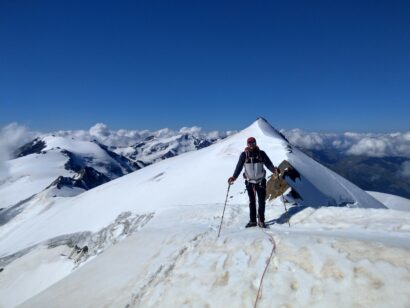
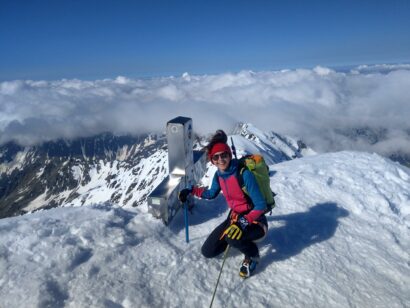
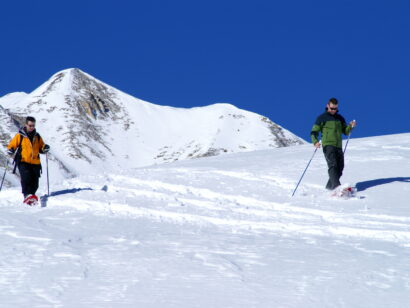
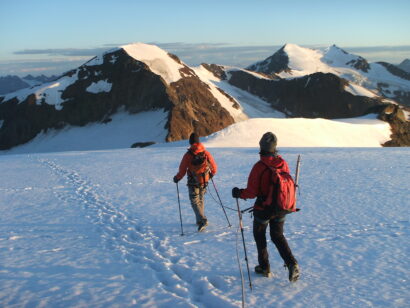
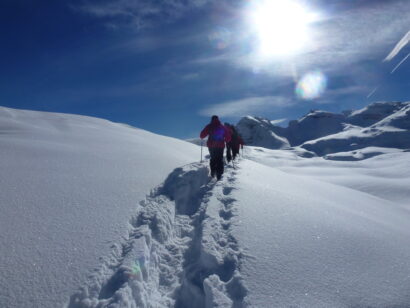
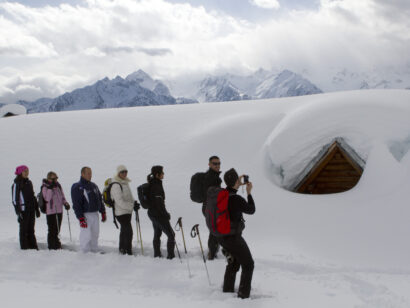
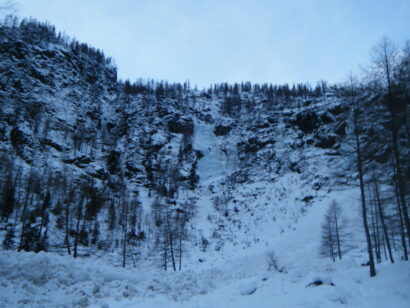
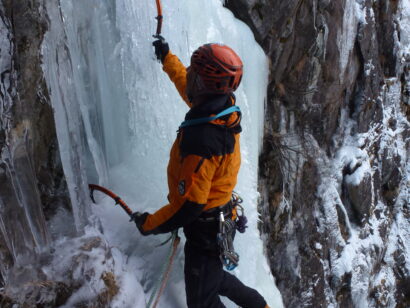
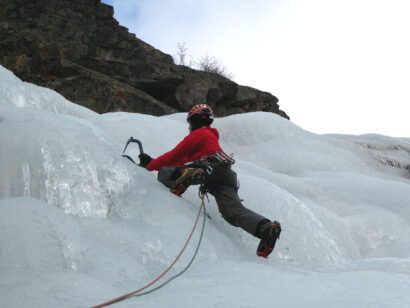
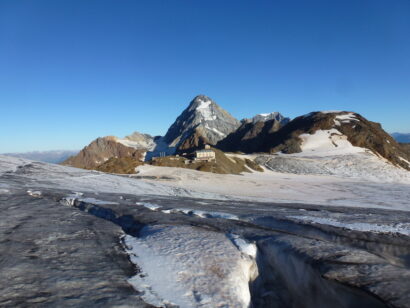
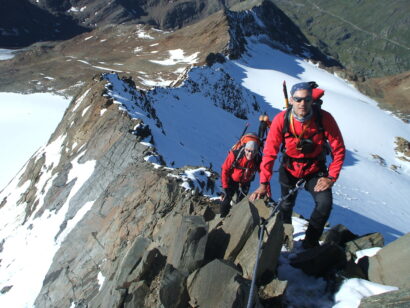
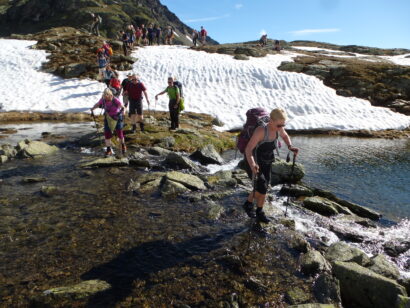
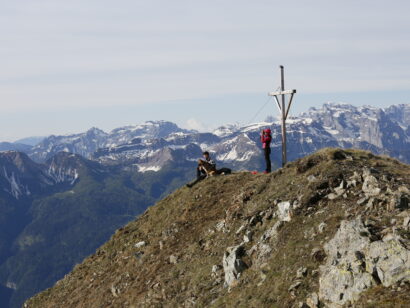
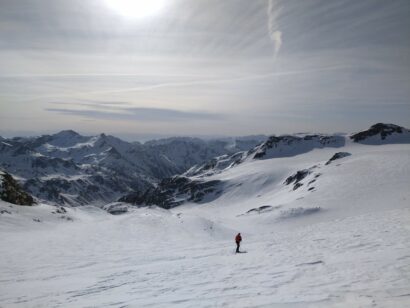
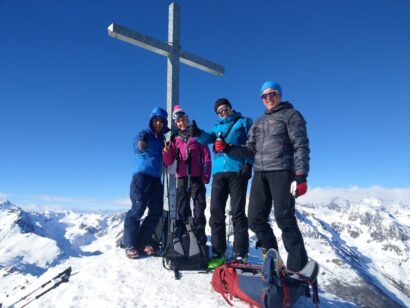
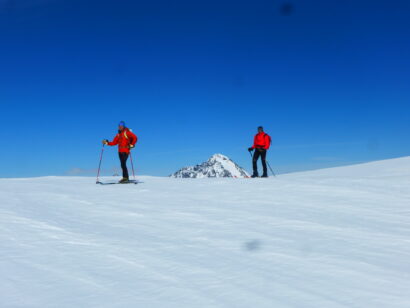
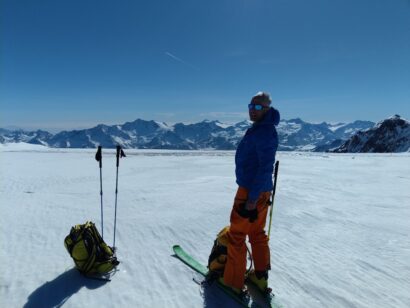
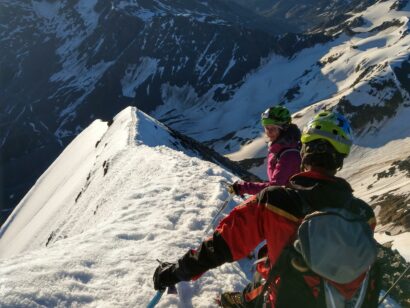
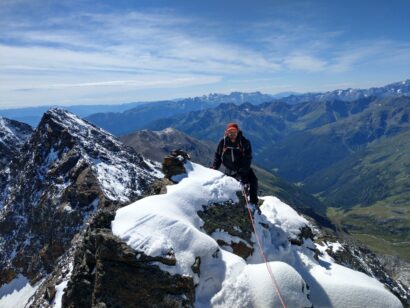
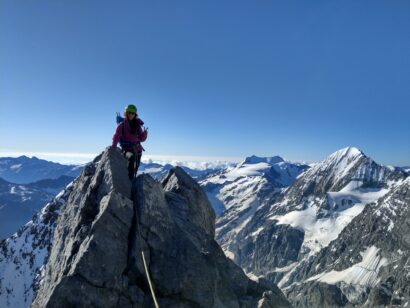
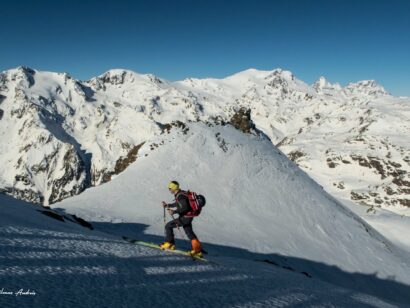
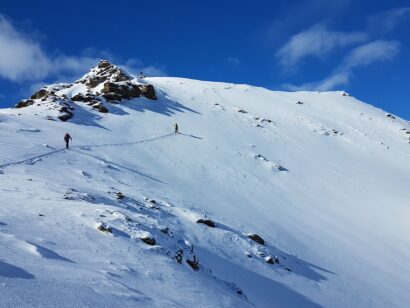
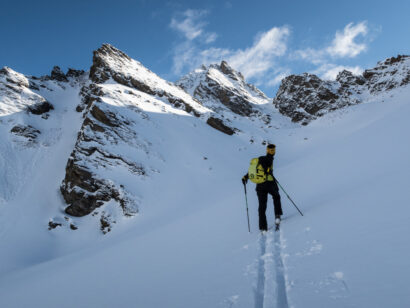
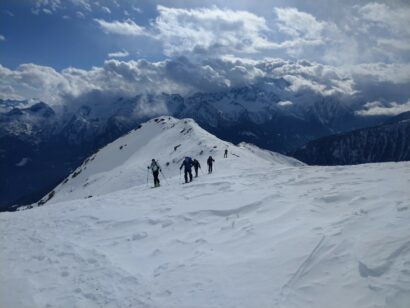
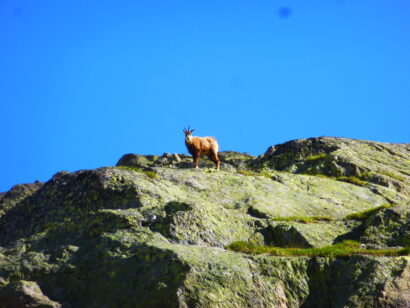
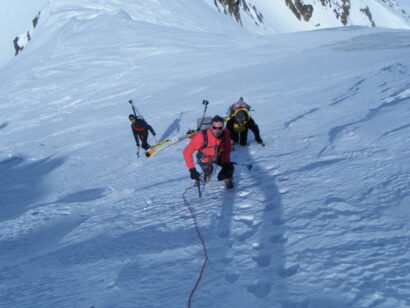
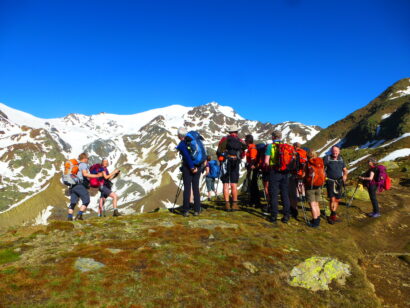
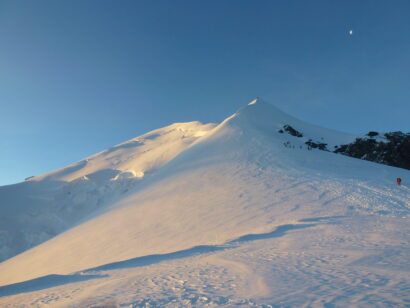
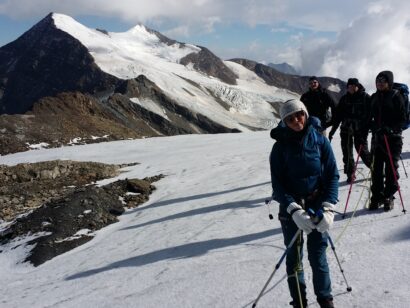
Follow us on our social channels and use the hashtag #guidealpinevaldisole